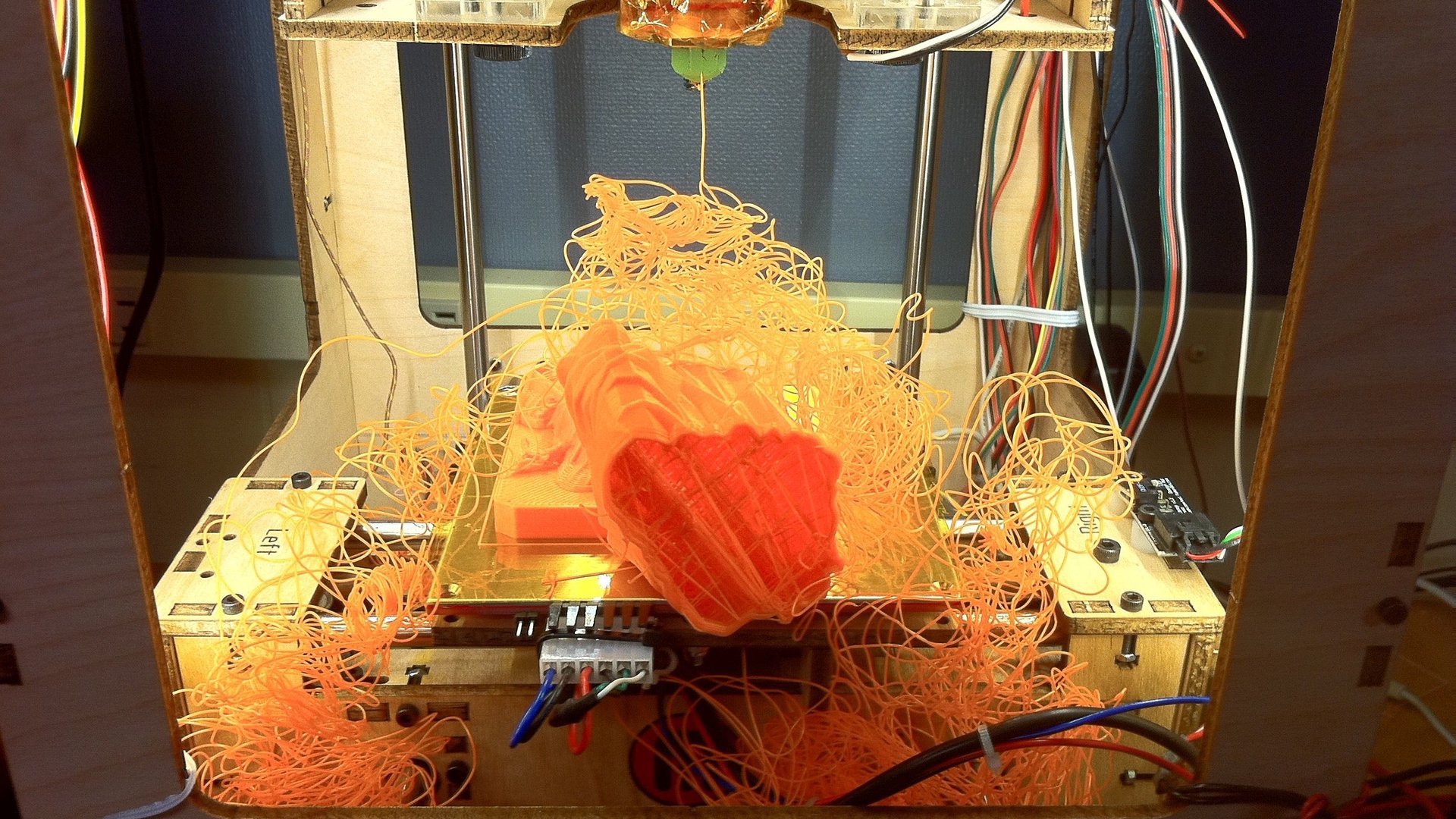3D printing is not the miracle we were promised
3D printing has been hailed as the future of manufacturing for years now. Consumers and investors were sold on the idea of being able to print anything at any time from a little box in their houses. But that Jetsons-like vision hasn’t come to pass. The 3D printers available to consumers are great for making small prototypes or tchotchkes. But they’re still slow, inaccurate and generally only print one material at a time. And that’s not going to change any time soon.


3D printing has been hailed as the future of manufacturing for years now. Consumers and investors were sold on the idea of being able to print anything at any time from a little box in their houses. But that Jetsons-like vision hasn’t come to pass. The 3D printers available to consumers are great for making small prototypes or tchotchkes. But they’re still slow, inaccurate and generally only print one material at a time. And that’s not going to change any time soon.
That reality is setting in for 3D printer makers. Stratasys, which owns MakerBot and is one of the world’s largest manufacturers of commercial and industrial 3D printers, announced its fifth straight quarter of losses today. 3D Systems, which was founded by the man who invented 3D printing—Chuck Hull—isn’t faring much better.
Wall Street’s interest in 3D printing seems to have peaked in the first week of 2014: The stock prices for both Stratasys and 3D Systems were at their highest on January 3 last year. Stratasys had completed the purchase of MakerBot—which has been called the “Apple” of 3D printing—about three months earlier, and it looked as if things were on the up. But a little over a year later, MakerBot laid off a fifth of its staff, closed its stores, and started focusing on selling to schools.
As it stands, it seems that the market is retracting to industrial printers, for companies that benefit from rapidly prototyping objects. 3D printing makes a lot of sense when companies can quickly model and print their ideas—anything from new bike helmets to car doors or sprockets. These are where (relatively) cheap, disposable plastic models thrive, as companies can churn out all the models they need, and then turn to more traditional automated processes, like CNC milling or vacuum forming, to build their final product at scale, using materials that will actually last.
There will always be the die-hard hobbyist crowd, but how many will be willing to spend over $1,000 on a printer that takes hours to print a pencil holder? Stratasys didn’t break out how many MakerBot printers it sold last quarter, but at last count, the company has sold about 80,000 units during its lifetime. There are cheaper printers on the market, some under $200, but they all require some understanding of 3D modeling software, and most of them still take a long time to print something out of plastic. That’s pretty much all they’ve been able to do for the last few years.
There are companies trying to expand 3D printing’s potential. Voxel8 just raised $12 million to bring its 3D printer that can print circuits to the market. Right now, it costs about $9,000 and is mainly targeted at universities and researchers, but that could change if it proves popular. Carbon3D has created an amazingly fast printer that can create objects in minutes, but it only prints in resin. Many companies are experimenting with printing with multiple materials at once, and there’s even one company that wants to bring a printer that prints (apparently edible) food to the market.
If a company can figure out how to bring some, or all, of these innovations together in one printer, then the “next industrial revolution” might edge a little closer. But the technical limitations of the technology, for the foreseeable future at least, mean that’s unlikely to happen. But for now, the market seems about as jammed as a MakerBot printer.
Image by Tony Buser on Flickr, licensed under CC BY-SA 2.0.